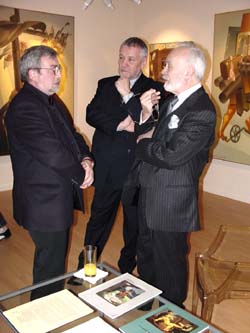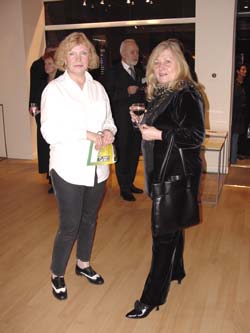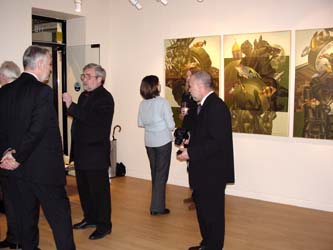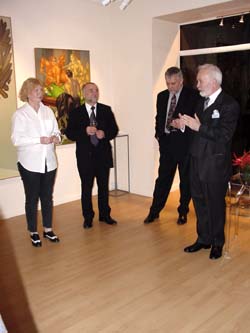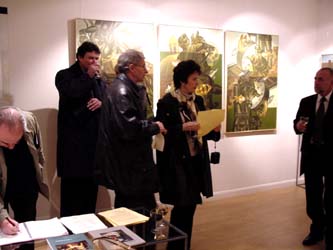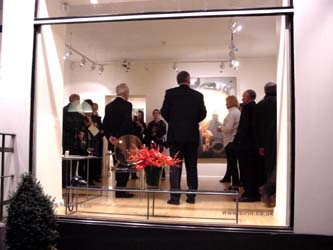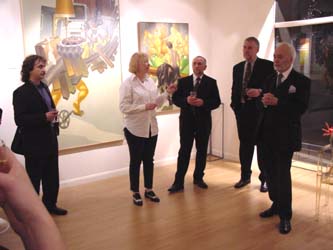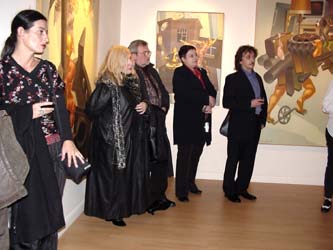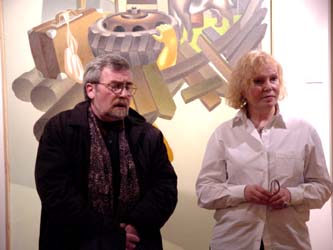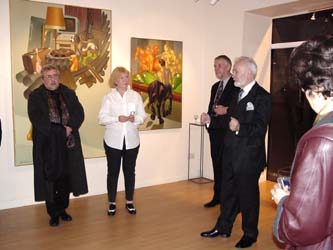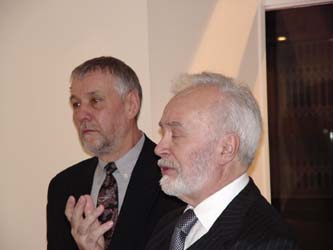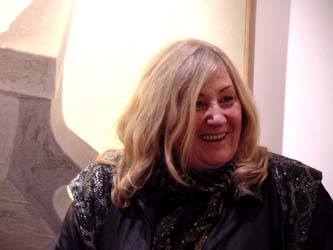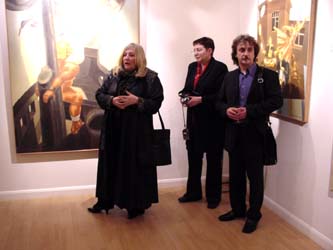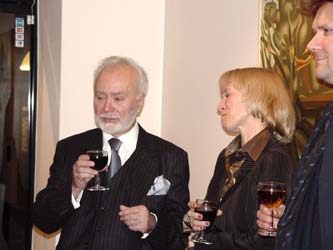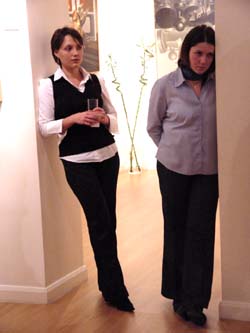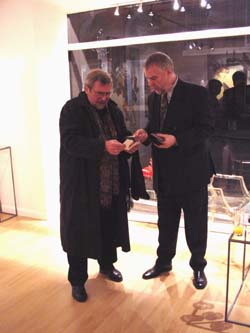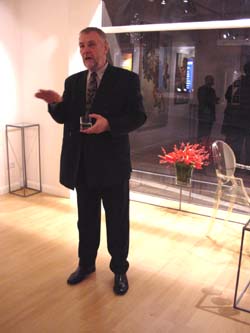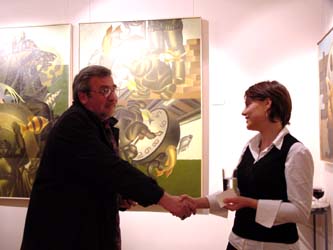 home
about
artists
exhibitions
press
contact
purchase
home
about
artists
exhibitions
press
contact
purchase |
|
|
10
November - 6 December 2003
In his art Vladimir Ovchinnikov frequently turns
to ancient myths and scriptural topics, provoking the audience to
interpret his works as mythological messages. But simultaneously he
replaces the characters of the chosen parable with his own personage
excessively carnal and narcissist one. The personage does not
correspond with any kind of advisability neither with the
mythological, nor with the realistic one. He remains alien and
destructive without regard to the context in which the artist puts
him. At the same time he possesses independence from the subject and
his own pictorial persuasiveness. Perhaps, that is the reason why
Ovchinnikov is always successful in replacing live characters with
different objects details, vegetables, and even outlines. Ovchinnikovs paintings give us a fine
example of artistic interpretation of absurdity. Nothing could be more absurd
than a human being. Ovchinnikov is good at showing us how a man denies every
possible advisability (which turns to be only a dream of his reason) only by
means of his presence. Vladimir Ovchinnikov was born and educated
in Russia. Working in the Mariinsky Theatre of St Petersburg as an assistant to
the artist Kirill Kustodiev and then in the State Hermitage Museum, was a true
school for Ovchinnikov. Further he proceeded with working on church
restorations. Since the middle of the 60s he participated actively in
exhibitions of underground art in Russia and abroad. At the present time, Ovchinnikov is a
recognised artist living in St Petersburg. His works are on display in museums
and galleries in Russia, USA, France, Germany, and other countries. His oil
paintings and bronze sculptures can be found in the collections of the Museum of
Underground Art (Jersey City, USA), the Metropolitan Art Museum (New York, USA),
the State Tretyakov Gallery (Moscow, Russia), Museum of Modern Art (Moscow,
Russia), the State Hermitage (St Petersburg, Russia), the State Russian Museum
(St Petersburg, Russia), Dostoevsky Literary Memorial Museum (St Petersburg,
Russia), the State Museum of St Petersburg History (St Petersburg, Russia), the
Beijing Art Museum (Beijing, China), the Tartu Art Museum (Estonia) and in
private collections in Russia and abroad. Solo Exhibitions: Presentation on 20th November 2003 |
|
|
|
|
